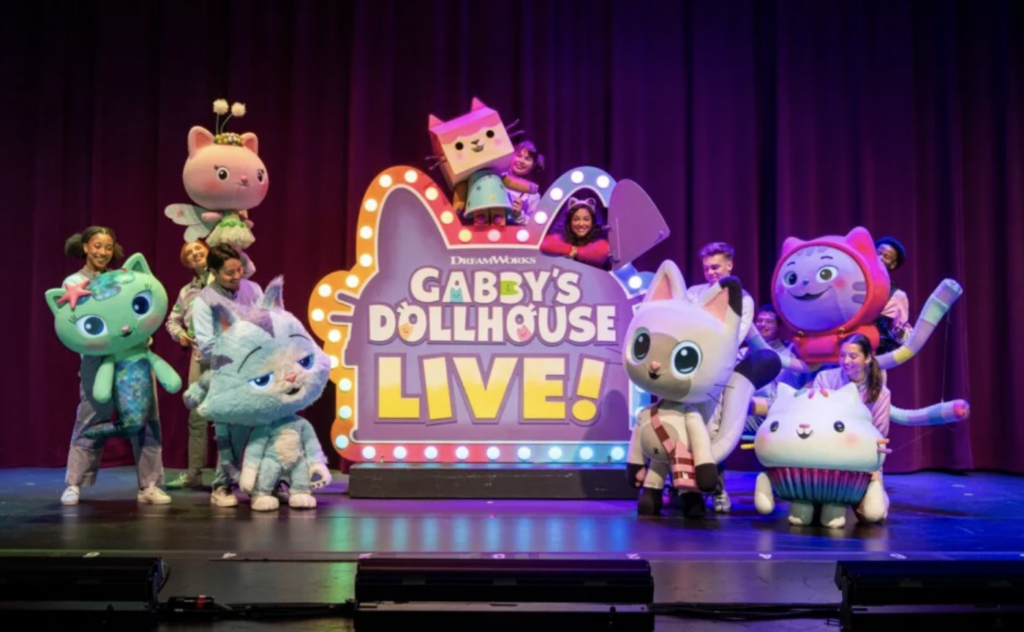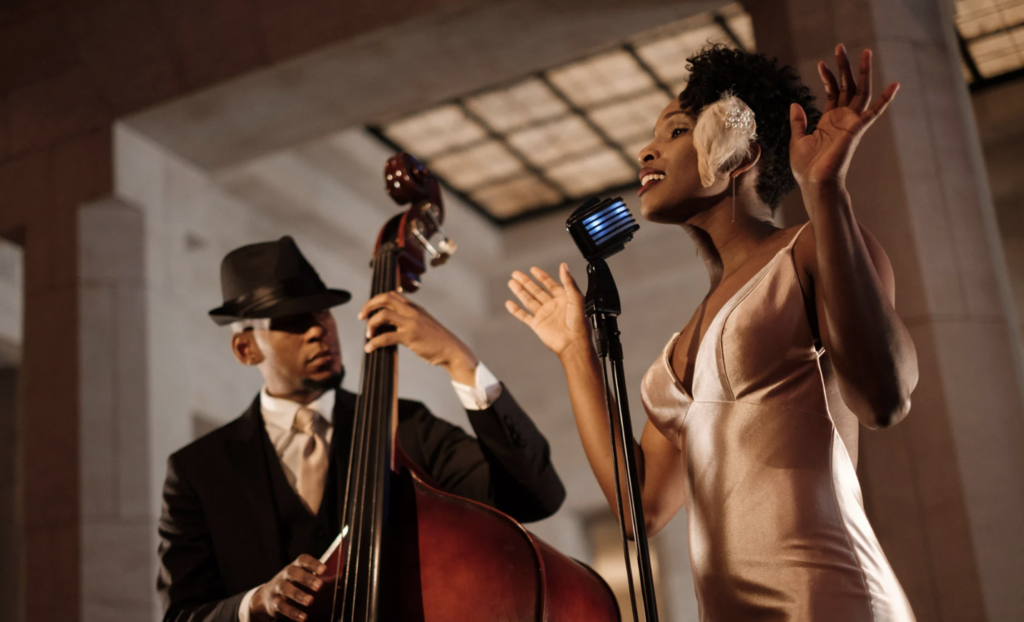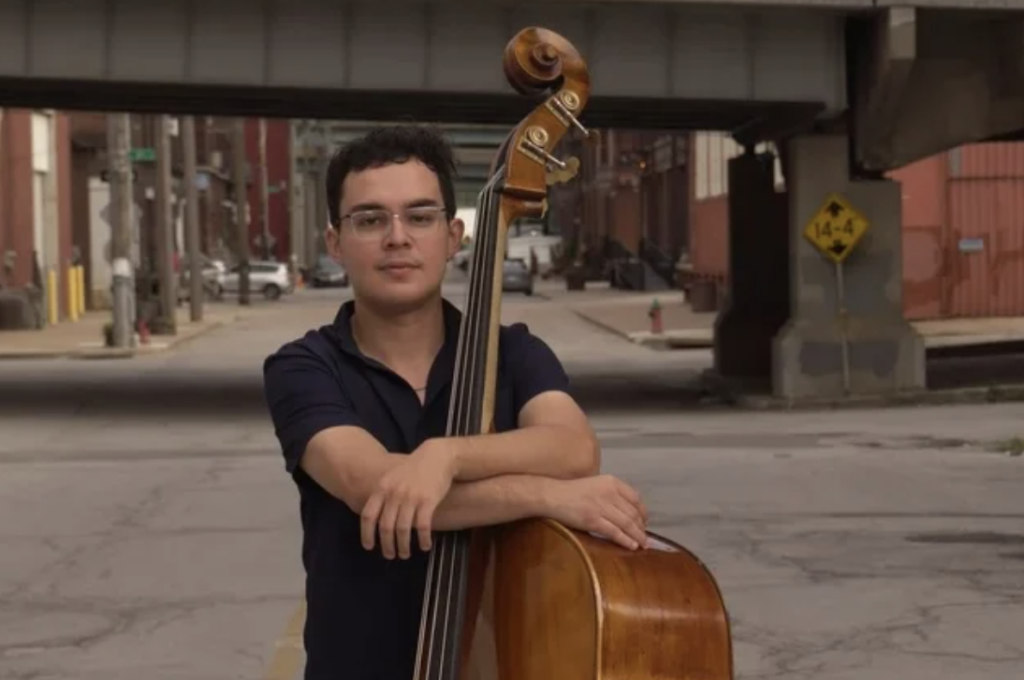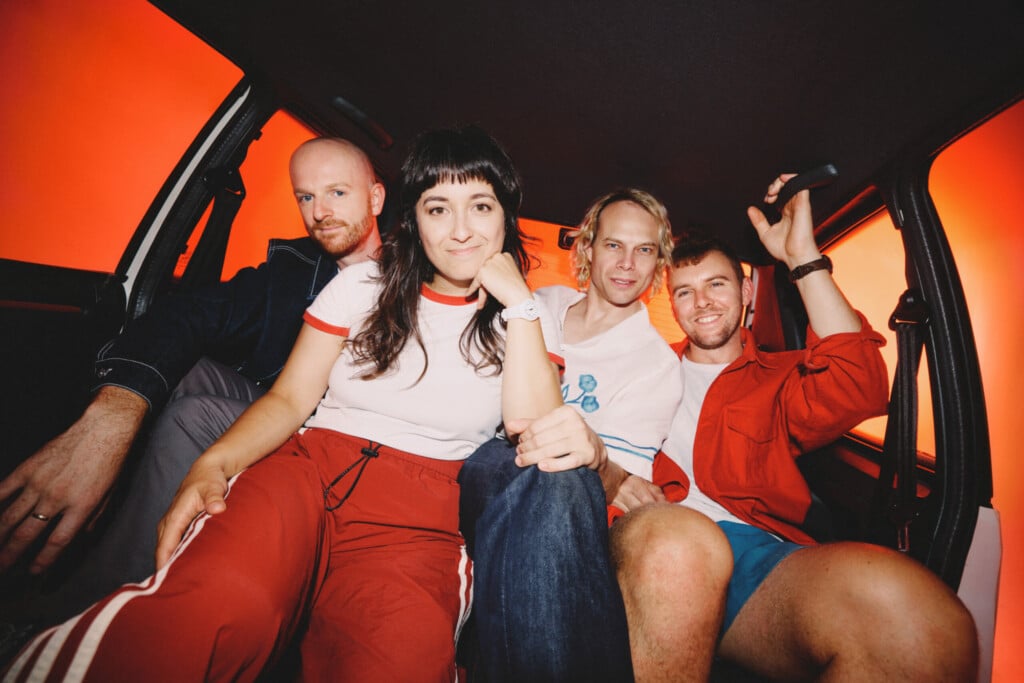Gabby’s Dollhouse Live! wants to hook kids on the joy of live concerts
Since its Netflix premiere in 2021, the mixed-media kid’s show Gabby’s Dollhouse has delighted children and their parents. From Blue’s Clues co-creator Traci Paige Johnson and the show’s executive producer Jennifer Twomey, the DreamWorks Animation series sees the titular character “jumping into a fantastical animated world full of adorable cat characters that live inside Gabby’s dollhouse.”
Since its premiere, Gabby’s Dollhouse has appeared at the 2024 Macy’s Thanksgiving Day parade, released a theatrical film entitled Gabby’s Dollhouse: The Movie in September of this year, and will be part of Universal Kids Resort in Texas when it opens in May of 2026.
Additionally, Gabby’s Dollhouse has a live tour, which hits the Midland in Kansas City on Wednesday, November 26, as part of its first leg before expanding across the United States in January. In Gabby’s Dollhouse Live!, “Gabby unboxes a special acorn that needs the magical touch of a rainbow to grow. But when CatRat causes a color cat-astrophe and breaks the rainbow, Gabby and the Gabby Cats must find the colors again to set things right.”
With live actors, puppetry, costumes, and songs, it’s a big deal show, and we hopped on Zoom with producer Jonathan Shank, CEO of Terrapin Station Entertainment, to discuss just hot this is all brought to life.
The Pitch: This is not the first tour you’ve done that’s adapted from children’s media. Where do you even start with one of these things?
Jonathan Shank: The idea comes from just looking out at the landscape of family entertainment and children’s IP and starting to connect the dots between content, consumer products, other types of brand extensions like theme park activations, and other experiential immersive experiences. Once a brand or a franchise starts to build to that point, it’s clear that there’s gonna be demand for a tour.
These things are not new. I mean, Sesame Street Live is the grandparent of all of this, but things have definitely changed over the years. How do you approach the multimedia aspect of it, be it video or, in the case of Gabby’s Dollhouse, puppets and costumes?
It’s a really fine line and balance between traditional theater and a multimedia interactive experience. Certainly, you need to be able to harness the technology to make sure that the show comes to life but ultimately, the foundation of these shows is authenticity and interactivity and really just breaking down that wall so that when kids and families come into their first-ever concert or theater experience, they get to be in the same room with their favorite characters.
Really, that is paramount. All of the other production is ancillary to providing that experience where they get to be in the same space with their favorite characters, oftentimes regarded as their rock stars. I oftentimes say for these kids, it’s the equivalent of them seeing Mick Jagger or Jimi Hendrix.
I love the fact that you’re like looking at this as “every show is someone’s first show.” It gets said all of the time, but I like the idea of this being entry-level theater for a bunch of kids. It introduces them to live performance, which is really an important thing to build from a young age. Why do you do this?
Simple answer, which is really to provide those experiences. I oftentimes say we’re in the business of, of delivering smiles and so I really think, for us, it’s just looking out at that audience and seeing how the kids and families react. Not just the kids–the siblings, the grandparents, the parents, and how much pride they take in introducing their children to the theater and to the arts and expanding their cultural bounds, so to speak.
You asked why I do this and I think back to my first ever concert, which was the Jackson Five Victory Tour in Philadelphia in 1984. Not exactly a children’s concert, but there was a ton of kids at that show and it did change the way that I thought about experiencing live music and going to concerts and that communal feeling of just being there together to experience something special.
It’s very notable that you’ve worked with members of the Grateful Dead. Those are artists for whom the show is just as much about the shared experience as it is the musicians on stage.
Yeah, and also, just to say that the Grateful Dead and some of these artists I’ve worked with hold live performance to the highest regard. I like to take that philosophy into our family shows in terms of presenting first-class production and it really being that “Wow!” moment for these kids and parents when they come into the theater and feel like that they have just entered into the world of Gabby’s Dollhouse.
As you alluded at the beginning of this, Gabby’s Dollhouse is having a moment. This tour coincides with the release of the film. Was there intentional synchronicity between the tour and the film, or is this intended to be something on its own?
Dreamworks and Universal Experiences and also TEG out of Australia–TEG developed the production–have been incredible partners and everybody worked really closely together to have a lot of synergy between the brand extensions. So, as soon as we became aware that the film was gonna be coming out in the fall of this year, we immediately hopped on the opportunity to piggyback the tour at the same time, knowing that there would be a tremendous amount of promotional marketing activity in the market.
How do you find the artists who work on this? It’s not just finding people to come on stage and sing. You’re looking for puppeteers, you’re looking for craftspeople to make these costumes. Where do you find these folks and how far in advance do you have to get going for this tour to work?
We do a traditional casting process, and there are a lot of theater kids that have just come out of school and are looking to go out on the road and get that experience and really refine their skills as either a puppeteer or a crew person or a lighting tech.
Really, how do we find these people? It’s a very careful process, but no different than any other casting process. Ultimately, you’re looking at people’s special skills, right? Because the show is not just about singing, dancing, and acting. You’re really looking for those unique skill sets, like a puppeteer and being able to interact with a live audience and being able to smile and really have that authentic preschool family feel that is wholesome and also a lot of fun.
You have done three seasons of your podcast, The Jam. Given the width and breadth of your experience in the music industry, how does speaking with legendary musicians and some real deep-cut folks in the industry balance with doing something that is very much for kids?
That’s exactly it. It is the juxtaposition of all of these different things and just putting them into a gumbo, so to speak. The Jam really evolved out of my experience working in the jam band scene and the improvisational music scene. A lot of these folks that are on the podcast are people that I’ve worked with in the past or have mutual friends with. The goal really was to try to get some things out there that were a little bit left of center and maybe not the traditional things that you would hear in an interview. They’d be coming from a bit more of a personal place and trying to pull some things out that maybe their core audience doesn’t already know about.
Ultimately, what I would say is the common denominator between family entertainment and the jam scene is that both start with a core audience. Whether you’re the Grateful Dead or Phish, or whether you’re Gabby’s Dollhouse or Disney, it all starts with the really, really strong core base. That’s the common denominator between everything that I do. It all has an incredibly strong, authentic core fan base that’s willing to engage with that band, with that intellectual property, with that franchise.
Given your history in dealing with fanbases, how have you seen fan culture change over the decades?
Well, I think people have, have had to become a lot more discerning in terms of the events that they’re going to because ticket prices have increased so much. Beyond that, I think that the fan behavior–etiquette, I would say–largely remains the same as it has in the past but I think that the main difference is the cell phone culture at concerts and the fact that people feel the urge to constantly be recording what’s happening on stage, which may or may not impede on somebody else’s collective experience. Certainly, none of us wanna be looking into the screen of somebody else’s phone in front of us while we’re watching our favorite artists could not agree more.
Do you go on tour anymore or are you strictly working from LA?
I get out to shows all the time. I still go see shows every week. I still do get out on tour and just went out to visit the Gabby’s Dollhouse tour in Orlando and continue to pop in and out of various cities at different times. But I don’t go on tour full-time at this point.
Who have you seen this week or last week that grabbed you?
Wow. Okay. Well, we went to see Joe Russo’s Almost Dead at the Greek Theater recently. I’ve seen My Morning Jacket at Red Rocks recently. That was a fantastic show. About to go see Robbie Krieger at the Greek Theater coming up here. I saw Stevie Wonder recently. He was fantastic. And then, I really like to see a lot of young artists as well–up and coming songwriters and, you know, different types of artists. So excited for No Doubt at the Sphere coming up next year.
I do think that you have to be able to–even if you don’t enjoy every vertical of entertainment–just to be able to experience it and understand how different people are using technology, how they’re utilizing production and scaling and ultimately, 99% of the time, I am the guy who’s walking outta the show saying it was fantastic.
Does it help keep you fresh in the pipeline so that you know what’s going on?
It just reminds you of why you’re doing this.
Gabby’s Dollhouse Live! is at the Midland on Wednesday, November 26. Details on that show here.








